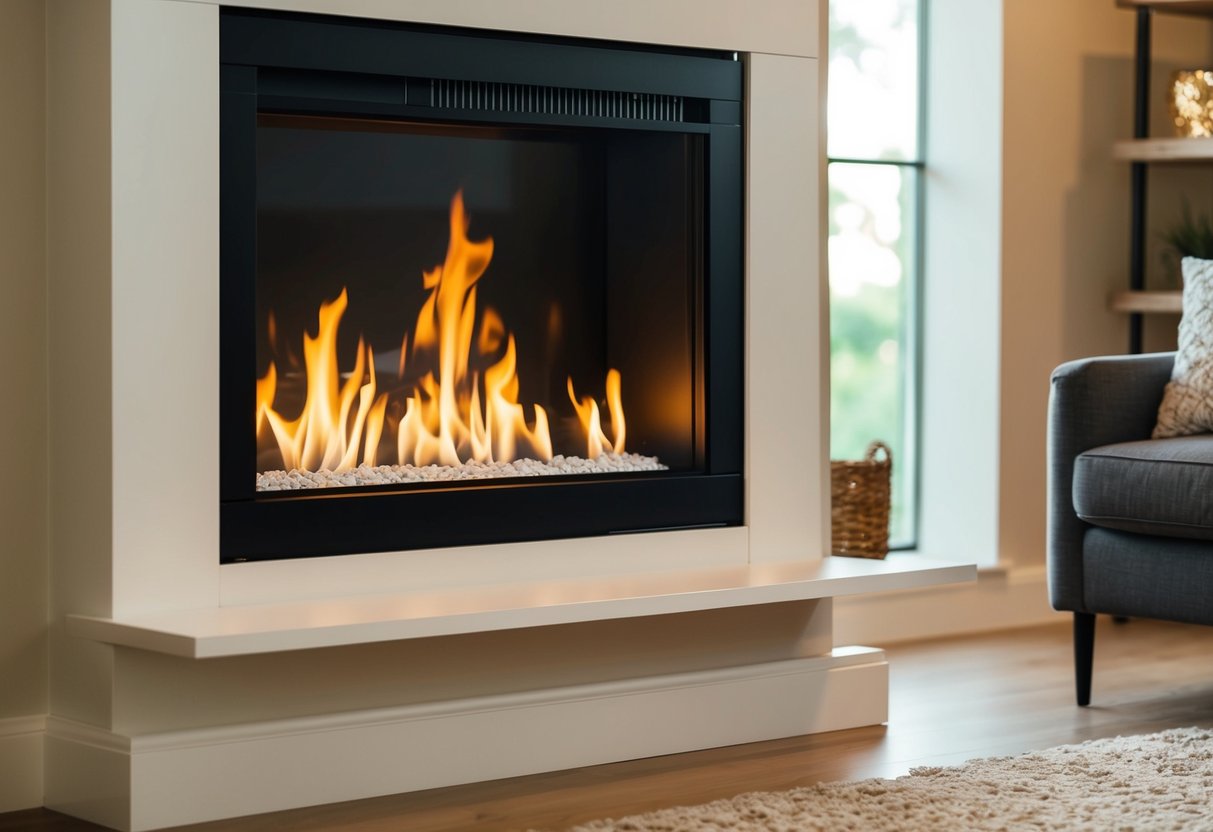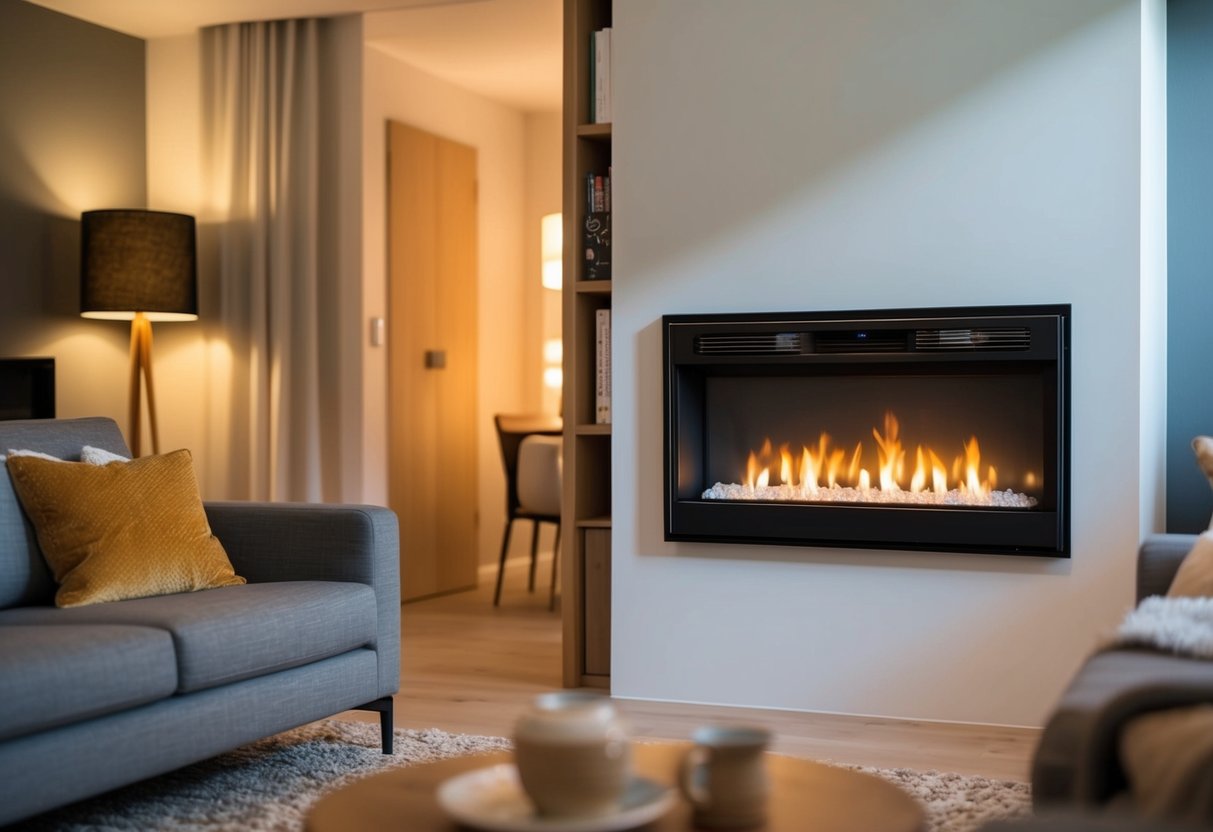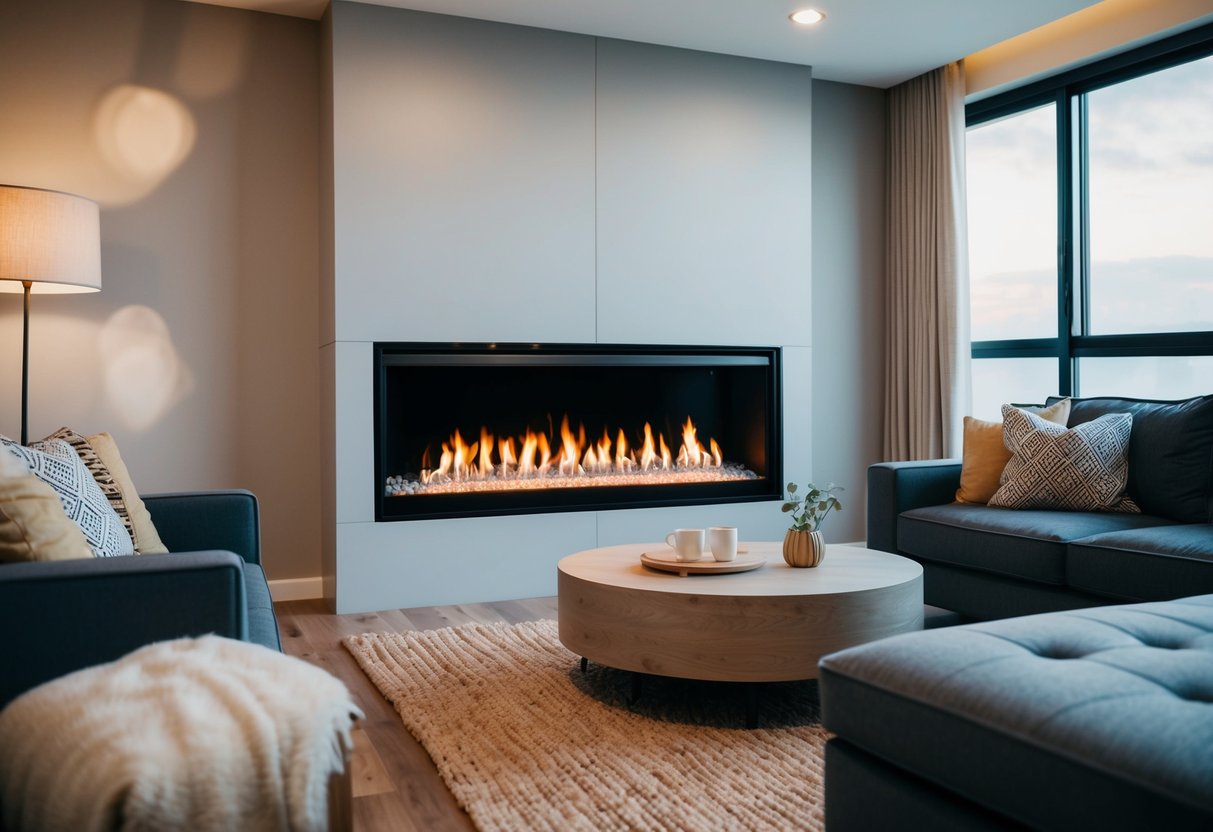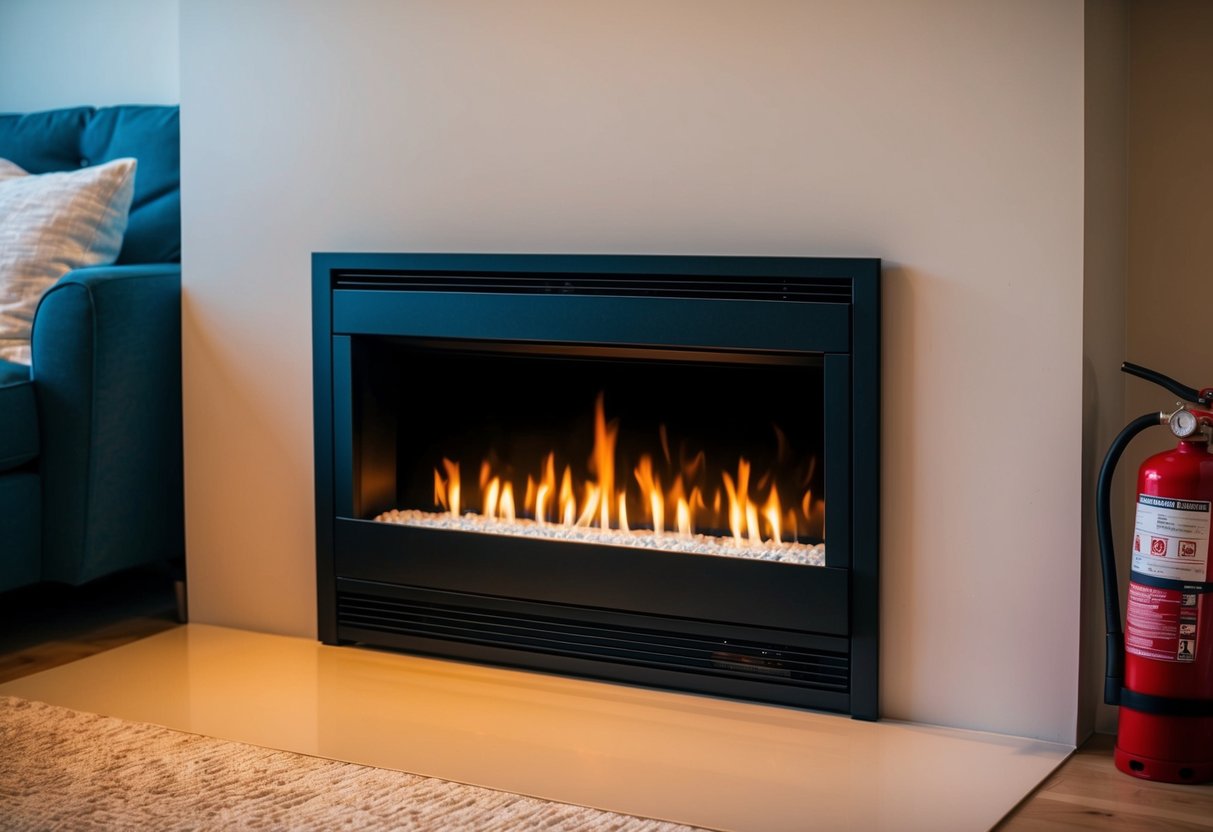Most Realistic Flame Gas Fireplaces (Top 2024 Picks)
When selecting a gas fireplace, the realism of the flame is a primary consideration for many homeowners seeking the cozy ambiance of a traditional wood fireplace. Gas fireplaces have come a long way in replicating the flickering, warm glow that’s almost indistinguishable from wood fire. Models like the Gazco Reflex 75T are often praised for their authentic appearance and highly efficient design, making them perfect for both modern and conventional homes. The Gazco Reflex 75T stands out with its flame visuals and detailed fuel bed, offering an experience so realistic it can transform any space into a haven of comfort and warmth.
Technological advancements have introduced features such as ceramic logs and embers, enhancing the lifelike quality of the flames. Patented technologies like dual-fuel options and remote-controlled heat settings add a layer of convenience while maintaining the desired aesthetic. The FDF400RT-ZC gas fireplace, for example, showcases these innovations with a powerful heat output and customizable settings, allowing users to tailor the ambiance to their liking.
For homeowners seeking the best in realism, it’s essential to consider the fireplace’s design elements alongside its performance capabilities. Crystal embers, realistic logs, and an efficient heat output contribute significantly to the overall experience. With the right combination of features, a gas fireplace can provide not only warmth but also the inviting atmosphere that makes a house feel like a home.
Key Takeaways
- Realistic flames are crucial for authentic fireplace ambiance.
- Innovations enhance flame realism and user convenience.
- Key features include design elements and heat performance.
Understanding Gas Fireplaces

Gas fireplaces have become a popular choice for their convenience, efficiency, and realistic flame visuals. They add warmth and ambiance to any space. This section explains the different types, venting options, and energy sources related to gas fireplaces.
Types of Gas Fireplaces
There are several types of gas fireplaces available, each with unique features. Direct vent gas fireplaces are popular for their safety and efficiency. They use a sealed combustion system that draws air from outside while venting exhaust gases back outdoors, making them suitable for most homes.
Vent-free gas fireplaces or ventless models do not require a chimney or flue. They are easier to install and can be placed in various locations but may not be legal in all areas due to emission concerns. Lastly, inserts are designed for existing fireplace spaces, providing an efficient update to old wood-burning systems.
Venting Options
Venting is a critical consideration when installing a gas fireplace. Balanced flue systems are commonly used in direct vent models and draw air from outside, enhancing safety and efficiency. This design prevents indoor air contamination and maintains indoor air quality.
Ventless options require no chimney, making them easier to install. However, they must adhere to strict regulations to ensure safety. Some regions have restrictions on their use. Another option is natural venting, using an existing chimney. Though less efficient, it can be a convenient solution when converting a wood-burning fireplace.
Energy Source Differences
Natural gas and propane are the main energy sources for gas fireplaces. Natural gas is often more affordable and connected to a home’s gas line, providing continuous supply. It’s ideal for areas with existing infrastructure.
Propane, on the other hand, is stored in tanks and is a good alternative in areas without natural gas service. It generally provides a higher BTU output, making it an efficient choice for heating. Each energy source has its pros and cons, and the choice may depend on availability, cost, and individual heating needs.
Key Features of Realistic Gas Fireplaces

Gas fireplaces are designed to deliver not only reliable heat but also visually captivating flames. Several key features contribute to making a gas fireplace more realistic, from the flame effects to efficient heat output.
Realistic Flame Effects
A gas fireplace’s flame effects are pivotal to its realism. Advanced models utilize dual burner systems to create layered flames, mimicking the unpredictability and depth seen in wood fires. The flame’s color, height, and flicker can often be adjusted, providing a lifelike experience. Settings allow users to modify the flame intensity and pattern, enhancing the overall ambiance. Detailed fuel beds, including gas logs, rustic coals, or pebbles, further enhance the visual appeal by adding texture and contrast, contributing to an authentic look.
Burner and Log Design
The design of the burner and logs significantly influences the authenticity of a gas fireplace. Gas logs are crafted with intricate details, with textures that resemble natural wood, complete with bark and grain patterns. A dual burner setup allows flames to envelop the logs realistically, creating the illusion of a multi-dimensional fire. These elements work in tandem to replicate woodburning flames. The strategic placement of burners ensures warmth distribution across the logs, enhancing both functionality and appearance.
Lighting Innovations
Lighting plays a crucial role in enhancing fireplace realism. LED lighting technologies are widely used to simulate the glow of embers and ashes. This is achieved through fiber-optic systems or strategically placed LEDs to mimic the warmth emitted by a traditional fire. Some models offer customizable lighting options, allowing users to adjust the color and intensity of under-log lights, which further enhances the authentic feel by creating dynamic visual effects.
Heat Output and Efficiency
Heat output, measured in BTUs, directly impacts the effectiveness of a fireplace. Models offering 25,000 BTUs and above are capable of heating large spaces efficiently. High-efficiency fireplaces convert fuel into heat with minimal waste, providing comfort while keeping operational costs low. Dual fuel technology, where applicable, allows users to choose between natural gas and propane, offering versatility and convenience. Designs that focus on retaining and consistently dispersing heat ensure a comfortable environment, perfect for long-term use.
Top Models with the Most Realistic Flames

Selecting a gas fireplace with realistic flames involves evaluating specific models for their design features and flame effects. Notable brands offer fireplaces with advanced technology and aesthetics that enhance authenticity.
White Mountain Hearth
The White Mountain Hearth series offers models known for their impressive realism. These fireplaces feature hand-painted ceramic logs, which mimic real wood with remarkable accuracy. Equipped with a burner system designed to produce dynamic flame patterns, they create a lifelike appearance.
Their clean-face design allows for an unobstructed view, adding to the realistic effect and seamlessly blending with any room decor. Whether it’s a traditional or contemporary setting, White Mountain Hearth fireplaces effectively replicate the warmth and ambiance of a real fire.
Majestic Echelon II
Majestic Echelon II fireplaces are celebrated for their cutting-edge linear fireplace design, offering a fusion of modern style and realism. The Echelon II series utilizes innovative burner systems that deliver highly detailed flames and realistic ember beds, providing an authentic fire experience.
This model emphasizes clean lines and large viewing areas, ensuring that the flames are the focal point. With various customizable options, including trim and front styles, the Majestic Echelon II enhances any contemporary space with its sophisticated look and convincing flame presentation.
Other Leading Brands
Several other remarkable brands contribute to the selection of realistic gas fireplaces. Napoleon offers designs with distinctive flame technology, simulating a true wood-burning fire. Their unique ember bed materials add depth and realism to the display.
Valor is recognized for its efficient heat output and realistic visual effects, making it a popular choice in areas requiring both warmth and ambiance. Featuring different formats such as see-through and vent-free models, these fireplaces cater to diverse interior design needs, from traditional homes to modern apartments.
Installation and Safety Considerations

Incorporating a gas fireplace with a realistic flame into any space requires attention to proper installation and safety features. Ensuring professional setup and understanding essential safety maintenance are key to safe and efficient operation.
Professional Installation
Professional installation is a critical step to guarantee safe and efficient operation of a gas fireplace. Technicians certified in gas safety protocols should handle the process to ensure compliance with local building codes and manufacturer specifications.
Installation should involve assessing the space for proper ventilation. Correct venting prevents hazardous gases from accumulating indoors. Properly sealing all connections helps avoid gas leaks. A licensed installer often provides a safety certificate upon completion, which may be required by local regulations.
Consulting with a qualified professional also allows homeowners to explore different venting options, such as direct vent, which can impact installation costs and site requirements. Additionally, professional installers can offer advice on integrating the fireplace style into the room’s décor, ensuring both functionality and aesthetic appeal.
Safety Features and Maintenance
Gas fireplaces come equipped with several safety features, making them a responsible choice for many homeowners. An oxygen depletion sensor is crucial as it automatically shuts off the gas supply if oxygen levels in the room fall below safe levels. This minimizes the risk of carbon monoxide buildup.
Routine maintenance involves checking the gas safe certification of devices annually or as directed by local regulations. Regular checks ensure that all safety features function correctly. Cleaning the fireplace, including the burner and pilot light, is necessary to prevent sooting issues and maintain efficiency.
Incorporating safety glass and proper clearance from combustible materials further enhances safety. Educating household members on the operation of remote controls and safety switches also contributes to a secure use of the fireplace.
Choosing the Best Gas Fireplace for Your Home

Selecting the right gas fireplace involves considering factors like functionality, aesthetics, and budget. Understanding these aspects ensures a good fit for your house and heating needs.
Assessing Your Needs
Before purchasing, evaluate how the fireplace will be used. Determine if a traditional wood-burning fire aesthetic or a modern glass media appearance suits your preferences. Consider the desired heat settings to match your space’s heating requirements. A gas fireplace insert can efficiently convert an existing wood-burning fireplace.
Additionally, the convenience of features like a remote control or electronic ignition should be considered. They can offer significant ease of use, especially for those looking to quickly adjust heat settings or ignite the fireplace without hassle.
Comparing Aesthetics and Features
The look of the fireplace can dramatically affect the room ambiance. Compare different designs, such as linear or freestanding models, to see what aligns with your home’s style. Realistic flame appearance is key for those seeking a genuine wood fire look.
Moreover, review additional features like electronic ignition systems or remote controls. Such features enhance user convenience. Fluctuating heat settings can also be beneficial, allowing users to control the room temperature precisely.
Budget and Long-Term Costs
Cost is a pivotal factor when choosing a gas fireplace. Prices can range significantly, with smaller units being more affordable. Initial cost is crucial, but long-term expenses, including maintenance and fuel, should not be ignored. Installation can also add to initial expenditures, so it’s wise to plan accordingly.
For those conscious of energy use, selecting a model known for efficiency might ease future utility bills. Investing in an energy-efficient fireplace could pay off over time, offering both comfort and savings.
Frequently Asked Questions
When selecting a gas fireplace with a realistic flame, consider important factors like the quality of flame effects and fuel bed design. High-end brands are known for their attention to detail in these areas, while advancements in technology continue to enhance flame realism.
What features contribute to a realistic flame in gas fireplaces?
Realistic flames are achieved through detailed fuel beds such as logs, coals, or pebbles. Crystal embers and ash effects add to realism. Strong, variable flames and adjustable lighting can also contribute to the effect.
Which high-end gas fireplace brands are known for their realistic flames?
Brands like Sierra Flame and other top-rated manufacturers often provide realistic flames in their high-end models. They focus on crafting intricate fuel beds and using high-quality materials to achieve natural-looking flames.
How does a direct vent gas fireplace enhance the authenticity of the flame?
Direct vent fireplaces draw air from outside for combustion, maintaining indoor air quality. This sealed system allows for realistic flames that are often stronger and more stable in appearance.
What advances in gas fireplace design have improved the realism of artificial flames?
Recent advancements include LED lighting, detailed ceramic logs, and variable flame heights. New burner technologies and smart controls help emulate the appearance and behavior of real wood fires.
Can fireplace inserts effectively mimic the look of a real wood-burning fire?
Fireplace inserts, particularly those with advanced flame technology, can effectively replicate the appearance of a wood-burning fire. They often include detailed log sets and adjustable flame features to enhance authenticity.
What are the top rated gas fireplaces for flame authenticity according to consumer reports?
Consumer reports often highlight models from manufacturers like Monessen and FDF400RT-ZC for their realistic flames. These units use advanced materials and designs to create believable flame effects.


